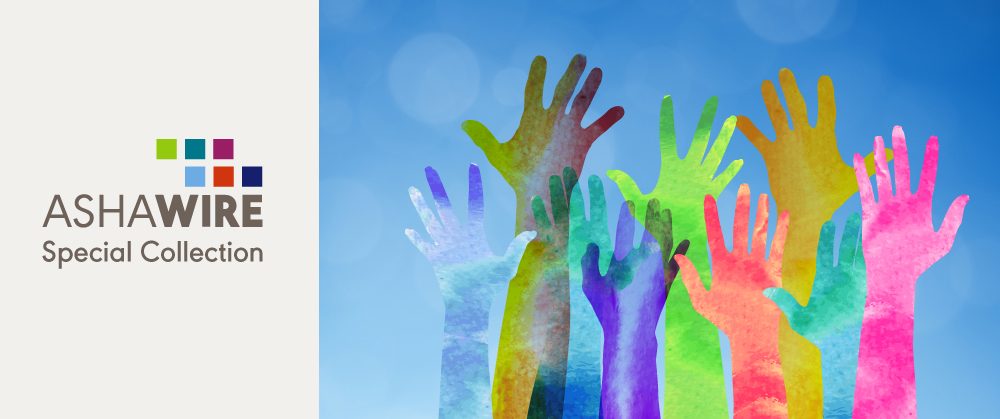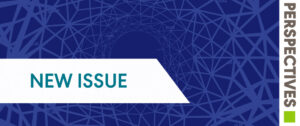The ASHA Journals continue highlighting efforts to promote culturally responsive practices with our latest special collection. Developed by ASHA’s Academic Affairs Board as well as leadership from three of ASHA’s Special Interest Groups—SIG 10 (Issues in Higher Education), SIG 11 (Administration and Supervision), and SIG 14 (Cultural and Linguistic Diversity)—ASHA’s Culturally Responsive Teaching and Learning (CRTL) Special Collection is now live!
About the Special Collection
This special collection highlights articles, resources, and webinars on CRTL in higher education for academic, clinical, and research education in communication sciences and disorders. This unique special collection was developed to provide course instructors with accessible information from ASHA alongside other evidence-informed resources.
The collection includes more than 20 articles from across the ASHA journals, representing more than 30 years of research. The collection also includes episodes from the ASHA Voices podcast on mentoring and increasing cultural responsiveness through story and self-reflection.
The vast collection of resources is divided into 10 topic areas, including culturally responsive teaching and learning through allyship, mentoring, recruitment, and more! You can browse the articles featured in the special collection below or visit ASHA’s Culturally Responsive Teaching and Learning (CRTL) Special Collection to learn more.
Like many of our special collections, Culturally Responsive Teaching and Learning will be updated and expanded as additional resources become available. Be sure to check back regularly to stay up to date on articles, websites, and more that address culturally responsive teaching and learning!
ASHA Journals Articles in the Special Collection
Chhuon, V., & Sullivan, A. (2013). Racialization of abilities and disabilities in U.S. schools: Asian American students in gifted and special education. Perspectives on Communication Disorders and Sciences in Culturally and Linguistically Diverse (CLD) Populations, 20(2), 49–59. https://doi.org/10.1044/cds20.2.49
Cornish, N., & White, M. (2016). Cultural proficiency: Supporting the development of cultural competence in mentoring relationships. Perspectives of the ASHA Special Interest Groups, 1(14), 104–115. https://doi.org/10.1044/persp1.SIG14.104
Crowe, K., & McLeod, S. (2020). Children’s English consonant acquisition in the United States: A review. American Journal of Speech-Language Pathology, 29(4), 2155–2169. https://doi.org/10.1044/2020_AJSLP-19-00168
Franklin, K., & Grossman, F. M. (1990). Bias effects of socioeconomic status and sex in decision making in speech-language pathology. Journal of Speech and Hearing Disorders, 55(1), 82–89. https://doi.org/10.1044/jshd.5501.82
Frazier, A. M. (2009). Culturally and linguistically diverse populations: Serving GLBT families in our schools. Perspectives on Communication Disorders and Sciences in Culturally and Linguistically Diverse (CLD) Populations, 16(1), 11–19. https://doi.org/10.1044/cds16.1.11
Gutierrez-Clellen, V. F., & Quinn, R. (1993). Assessing narratives of children from diverse cultural/linguistic groups. Language, Speech, and Hearing Services in Schools, 24(1), 2–9. https://doi.org/10.1044/0161-1461.2401.02
Herd, C., & Moore, R. (2012). Multicultural issues: Supervision and multicultural issues: Supervisors and supervisees. Perspectives on Administration and Supervision, 22(1), 33–39. https://doi.org/10.1044/aas22.1.33
Hopf, S. C., Crowe, K., Verdon, S., Blake, H. L., & McLeod, S. (2021). Advancing workplace diversity through the culturally responsive teamwork framework. American Journal of Speech-Language Pathology, 30(5), 1949–1961. https://doi.org/10.1044/2021_AJSLP-20-00380
Kendall, D. L. (2021). Systems of oppression in geriatric clinical service delivery. Perspectives of the ASHA Special Interest Groups, 6(1), 167–169. https://doi.org/10.1044/2020_PERSP-20-00215
Kohnert, K. (2013). One insider’s reflections on white privilege, race and their professional relevance. Perspectives on Communication Disorders and Sciences in Culturally and Linguistically Diverse (CLD) Populations, 20(2), 41–48. https://doi.org/10.1044/cds20.2.41
Levey, S., Cheng, L.-R. L., & Almodovar, D. (2020). Developing evidence-based assessment to prevent over- or underidentification of disorders for new language learners. Perspectives of the ASHA Special Interest Groups, 5(4), 1026–1038. https://doi.org/10.1044/2020_PERSP-19-00115
Lindsay Nurse, K. T., Gardner, K., & Brea, M. R. (2021). Operationalizing culturally responsive research practices: Documenting the communication skills of children with confirmed or possible exposure to the Zika virus in Saint Lucia, West Indies. Perspectives of the ASHA Special Interest Groups, 6(1), 191–206. https://doi.org/10.1044/2020_PERSP-19-00140
Malandraki, J. B. (2022). The case for addressing emotional resilience in graduate student training. Perspectives of the ASHA Special Interest Groups, 7(1), 105–114. https://doi.org/10.1044/2021_PERSP-21-00116
Martino, N., Melcher, J., & Highnam, C. (2007). Successful retention of diverse students. Perspectives on Issues in Higher Education, 10(2), 7–10. https://doi.org/10.1044/ihe10.2.7
McLean, M., Roche, J. M., Audet, L., Stribling, D., & Kaufman, R. (2021). Explicit and implicit cognitive processes associated with microaggression endorsement. Perspectives of the ASHA Special Interest Groups, 6(6), 1719–1728. https://doi.org/10.1044/2021_PERSP-21-00005
McLeod, S., & Crowe, K. (2018). Children’s consonant acquisition in 27 languages: A cross-linguistic review. American Journal of Speech-Language Pathology, 27(4), 1546–1571. https://doi.org/10.1044/2018_AJSLP-17-0100
McLeod, S., Verdon, S., Baker, E., Ball, M. J., Ballard, E., Ben David, A., Bernhardt, B. M., Bérubé, D., Blumenthal, M., Bowen, C., Brosseau-Lapré, F., Bunta, F., Crowe, K., Cruz-Ferreira, M., Davis, B., Fox-Boyer, A., Gildersleeve-Neumann, C., Grech, H., Goldstein, B., . . . The International Expert Panel on Multilingual Children’s Speech. (2017). Tutorial: Speech assessment for multilingual children who do not speak the same language(s) as the speech-language pathologist. American Journal of Speech-Language Pathology, 26(3), 691–708. https://doi.org/10.1044/2017_AJSLP-15-0161
Neel, A. T. (2021). Promoting cultural and linguistic competence in speech science courses. Perspectives of the ASHA Special Interest Groups, 6(1), 207–213. https://doi.org/10.1044/2020_PERSP-20-00236
Orellana, C. I., Wada, R., & Gillam, R. B. (2019). The use of dynamic assessment for the diagnosis of language disorders in bilingual children: A meta-analysis. American Journal of Speech-Language Pathology, 28(3), 1298–1317. https://doi.org/10.1044/2019_AJSLP-18-0202
Robinson, G. C., & Norton, P. C. (2019). A decade of disproportionality: A state-level analysis of African American students enrolled in the primary disability category of speech or language impairment. Language, Speech, and Hearing Services in Schools, 50(2), 267–282. https://doi.org/10.1044/2018_LSHSS-17-0149
Saenz, T. I., Wyatt, T. A., & Reinard, J. C. (1998). Increasing the recruitment and retention of historically underrepresented minority students in higher education: A case study. American Journal of Speech-Language Pathology, 7(3), 39–48. https://doi.org/10.1044/1058-0360.0703.39
van Kleeck, A. (1994). Potential cultural bias in training parents as conversational partners with their children who have delays in language development. American Journal of Speech-Language Pathology, 3(1), 67–78. https://doi.org/10.1044/1058-0360.0301.67







